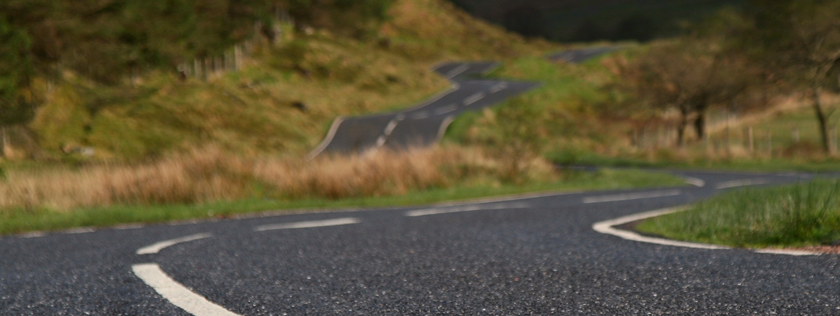Rural roads – should you be driving at the national speed limit?

Rural roads are frequently identified as places where crashes are common – and often serious.
By their very nature, they are more risky than roads in built-up areas.
Roads in built-up areas in towns and cities often have lower speed limits, tend to be well-lit, have lots of speed restriction measures like pedestrian crossings or speed bumps and are often very straight so road users can see ahead and anticipate traffic.
Comparatively, rural roads usually have speed limits in excess of 50mph, have no or little street lights, there are few measures to break up the flow of traffic and the routes can be twisting or obscured with vegetation.
Like it says in the Highway Code it’s therefore important to consider not how fast you are allowed to drive but for drivers to be mindful of where they are driving and what the conditions dictate would be safe.
Conditions and hazards to consider on rural roads
Other road users
On rural roads, the likelihood is you will not just be sharing the road with other vehicles - particularly during the summer many people can be found on foot, horses and bicycles.
Such vulnerable road users may not be as visible as vehicles so more care should be taken to ensure the safety of these people AND yourself and any passengers you are responsible for.
Wildlife
It is likely the surrounding land is used for farming or forestry so cattle, deer, foxes, pheasants and the like can appear from time to time.
Animals may not be visible at a distance – and often dart out in front of you – so it is important to be mindful of areas where an animal strike could be possible, and travel at a speed that allows you to safely stop or manoeuvre in time if necessary, and safe to do so.
The lie of the land
Despite national speed limits often being in place, the layout of many rural single-carriageway roads are simply not suited to high speeds. The narrow stretches or high vegetation on the banks restrict visibility. This is especially true when driving at night, in the rain or having to negotiate heavy goods vehicles that frequently use rural roads.
Blind bends can make it particularly difficult for drivers to be aware of fellow road users that are perhaps not in their direct line of sight.
The Highway Code advises that you should always drive at a speed that will allow you to stop well within the distance that you can see ahead to be clear and at times travelling at the maximum speed limit could well be reckless.
Tourists
Rural roads often lead to popular tourist destinations such as the “North Coast 500”. In the busy summer months, expect to find road users who are potentially unfamiliar with or lack experience in driving on these carriageways.
Local authorities in the Highlands have already made efforts to address the issue with a “Keep Left” campaign, which was set up in early 2019 after a road accident happened when a tourist drove on the wrong side of the road.
Weather conditions
Rural roads also may not receive the same level of gritting work compared to urban roads. This means cold weather demands greater vigilance and consideration from drivers.
There could be black ice on the road and it is the driver’s responsibility to be driving slow enough to spot this and react appropriately.
Low sun glare and heavy rains also impact safety and again, drivers need to adjust their speed to ensure they can spot hazards on the road.
The national speed limit should not be a goal to achieve – it should be the absolute limit and drivers need to consider what speed is really safe to drive at.
Saving a few minutes on your journey time is simply not worth the risk.
